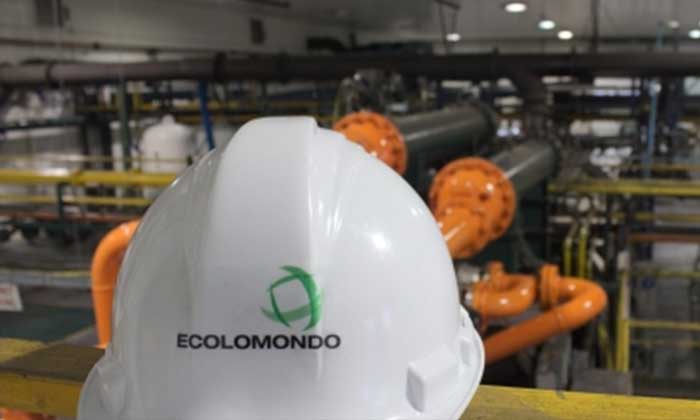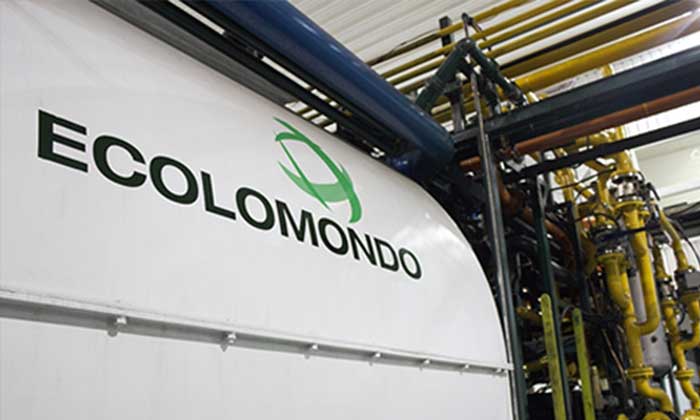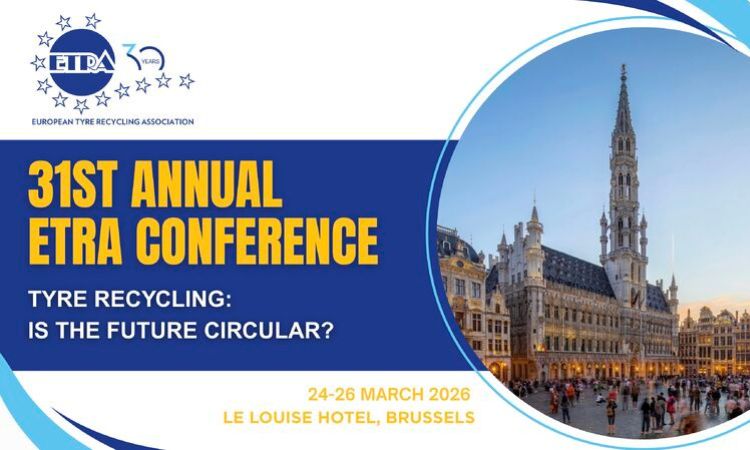Weibold Academy: Global end-of-life tire management
Weibold Academy article series discusses periodically the practical developments and scientific research findings in the end-of-life tire (ELT) recycling and pyrolysis industry.
This article is a review by Claus Lamer – the senior pyrolysis consultant at Weibold. One of the goals of this review is to give entrepreneurs in this industry, project initiators, investors and the public, a better insight into a rapidly growing circular economy. At the same time, this article series should also be a stimulus for discussion.
For the sake of completeness, we would like to emphasize that these articles are no legal advice from Weibold or the author. For legally binding statements, please refer to the responsible authorities and / or specialist lawyers.
Introduction
Environmental and social awareness is becoming the key element of the sustainable tire industry. End-of-life tires (ELTs) are one of the most abundant as well as the most attractive waste from an economic point of view. More than 30 million tons ELTs are generated worldwide annually (WBCSD, 2019) and this waste stream is growing dynamically.
ELTs are not biodegradable and belong to the category of non-hazardous waste. Unfortunately, improper management of ELTs is still a common phenomenon in many economies in transition and developing economies. In fact, on a global level, nearly one-half of ELT waste flow is disposed of in landfills or burned (for only one-time energy production). Landfilling of whole and shredded tires might be the most economically sound management option, but it should be banned in general worldwide since it presents a major threat to the environment and public health (and it removes a valuable resource from sustainable and resource-saving use).
Since 1999, ELT landfilling has been legally prohibited by the European landfill directive 1999/31/EC (EU. 1999). After that, in 2000, many policies were presented which set out more detailed guidelines for ELT management. In the meantime, there were synchronizations with global regulations. The Waste Framework Directive (WFD) 2008/98/EC provided concepts and definitions related to ELT management. According to WFD, management options are prevention, minimization, reuse, recycling, energy recovery, and disposal (waste hierarchy). WFD was a significant step forward in all relevant aspects of waste management, including ELT as a group of end-of-life vehicle (ELV) parts. Based on these regulations, the European landfill directive 1999/31/EC being the key driver for improving ELT management, many countries around the world are in the process of developing their regulations to prolong the service life of tires and reduce their negative impact on the environment.
Sound ELT management has vital importance for circular economy and sustainable development. It requires an ecologically efficient and economically effective waste management scheme. ELT management depends on numerous entities and state-of-the-art technologies to convert waste into valuable products. Today, ELT management is a progressive and well positioned research area. Besides, according to the reports published by the largest associations of tire producers and recyclers (e.g., ETRMA 2019; CRIA - China Rubber Industry Association 2020; JATMA 2020, 2021), significant advancements have been made in sustainable ELT management in the last few years. As a result, ELTs are not only be regarded as waste but also as a source of environmentally friendly materials.
Over the last decade, ELT management has attracted many researchers and practitioners, but a comprehensive review of the ELT management area was still missing. A recent study by Dabic-Miletic and colleagues presented the first critical review of the whole ELT management area in 2021. This study presents an extensive content analysis overview of state-of-the-art research, provide its critical analysis, highlight major gaps, and propose the most significant research directions. A total of 151 peer-reviewed studies published between 2010–2020 were collected, analysed, categorized, and critically reviewed. This review study redounds comprehensive insights, a valuable source of references, and major opportunities for researchers and practitioners interested in not only ELT material flow but also the whole waste management area.
ELT market overview
ELT recycling markets worldwide are mainly driven by the regulatory context in each country. Government regulations are enacted to address environmental issues related to illegal dumping or importation of ELT as well as historical stockpiles leading to public health and sanitary issues (e.g., fire hazards, breeding ground for mosquitoes and vermin, and the current issue of the Zika virus etc.) that can be the result of ELT collection and processing systems not functioning.
The World Business Council for Sustainable Development (WBCSD) in the context of the Tire Industry Project (TIP) commissioned Deloitte to conduct a study on end-of-life tire (ELT) management. This study provides an update to the State of Knowledge (SOK) in a selection of countries from the previous WBCSD ELT study conducted between 2016 and 2017 but also delves deeper into aspects such as studies conducted on the impacts of recovery methods, products, applications on human health and the environment, and research and development of advanced ELT recovery technologies. In addition, the report also analyses the feasibility of different major ELT recovery categories through the associated methods, products and applications according to a number of criteria covering regulatory context, technical feasibility, economic drivers, and sustainability considerations.
The purpose of this study is to give an overview of the current ELT management systems for Argentina, Brazil, China, Europe, India, Indonesia, Japan, Mexico, Nigeria, Russia, South Africa, South Korea, Thailand, and USA.
The total amount of ELT recovered in these 13 countries and the European region amounts to approximately 25.7 million metric tons per year and 26.1 million tons per year if civil engineering and backfilling are considered as a recovery route. The overall amount of ELT generated in these 45 countries (contributing to 83.5% of global vehicle usage) is estimated to be 30.9 million tons.
The countries and regions that recover the largest quantities of ELT are China, United States and Europe. China is considered to have the highest recovery rate, of 100% (14.5 million tons), although just under two thirds are not formally registered and are deemed to be ELT collected with undetermined end use.
Recovery routes
Energy recovery is a straight-forward means of recovery requiring limited processing and treatment. It makes up half of the ELT market in the USA (mainly use in cement kilns but also the pulp and paper industry and utilities) and South Korea (where there is a limit of the portion of ELT being sent for energy recovery, set at 70%) and even up to 40% in Europe, where material recovery is prioritized over energy recovery. In Japan, unlike other governments’ policies, there is active promotion of the use of TDF through the country’s energy policy (exemptions from reduction objectives) and ELT mainly becomes tire derived fuel (TDF) for paper manufacturing boilers. Brazil also has a high rate and depends on consumption by the cement industry (75% energy and 25% material recovery). (WBCSD, 2019)
Material recovery including the production of rubber granulate, facilities often have relatively high costs such as initial capital expenditure. Another key element is the need to develop secondary and end use industries to absorb the ELT product. As aforementioned, in Europe, material recovery is generally prioritized over energy recovery and makes up approximately half of ELT recovered. In Russia, policy directs ELT to material recovery, as energy recovery is not eligible to meet ELT management targets. A quarter of ELT generated in the USA becomes rubber granulate with applications including molded rubber products, playgrounds, sports facilities, and asphalt. In California, material recovery is prioritized. Material recovery makes up less than a quarter of ELT recovered in South Korea. It is important to note that the production of reclaim rubber is particularly predominant in Asia.
The recovery methods of pyrolysis (which is material recycling as it generates carbon, oil, and gas) and gasification (generating gas) are significant in Asia for example in Indonesia, Thailand, and Japan, which may have different levels of quality of end products. Several research institutions and projects have focused on the development of pyrolysis as a (material) recovery method and the products of the process. In Europe, research has given attention to high quality oil and carbon black. In Russia, a form of accelerated pyrolysis is being studied. Work in China is focusing on low emissions pyrolysis technology. In the USA, studies have recently been conducted on the potential use of carbon from ELT pyrolysis in the production of batteries. (WBCSD, 2019)
For the application of ELT in civil engineering and backfilling, there has been significant growth in the USA over the past decade, reaching 10% of the ELT market. (WBCSD, 2019)
Management systems
A minimum level of some form of intervention from the government is very often necessary in order to properly develop the ELT recycling industry. In some countries, the role of the government is limited to the organization of the ELT stakeholders or can be more interventionist regarding financial and technological development of the sector. (WBCSD, 2019)
Globally speaking, the development of ELT recycling markets is still quite recent. Although some recovery methods, products and applications are more profitable than others and examples of success stories exist in some regions, taken as a whole, the ELT market has been struggling to be profitable and self-sufficient. Financial support with a formalized ELT management system is very often an important factor to increase the competitiveness of the industry and achieve high recovery rates. (WBCSD, 2019)
Different ELT management systems exist at national levels. The three main systems are:
- Extended producer responsibility (EPR): In this system the responsibility for collecting and ensuring treatment of ELT is imposed on the actors that put new tires onto the market (tire manufacturers and importers) through an eco-fee. This is a very common configuration in European countries including Hungary, Italy, France, Spain, Netherlands, Sweden, Turkey, Belgium, Portugal, Finland, Estonia, Latvia, Lithuania, Greece, Slovenia, Czech Republic, Slovakia, and Ireland and is also used by Brazil, South Korea and Russia. The system usually involves these actors setting up a non-profit organization that manages the collection and recovery of the end-of-life product. The extra cost is generally passed onto the consumers, with an environmental fee (eco-fee) added to the product price. (WBCSD, 2019)
- Tax system (TS): In this system, the responsibility lies with the state and collection and recovery are financed by a tax on production which is passed on to the consumer. The few countries that run such a system include Denmark, Slovakia and Croatia. (WBCSD, 2019)
- Free-market system (FMS): In this system, the state or federal legislation may set action plans (qualitative objectives) or obligations to have an ELT management plan (e.g., Mexico), however responsibility (eco-tax or eco-fee) is not imposed upon actors. The countries with this system are Argentina, China, India, Indonesia, Japan, Mexico, Nigeria, Thailand, UK, Germany, Switzerland, Austria, Serbia and the USA. (WBCSD, 2019)
Some countries have very low awareness of the environmental and public health risks related to ELT, including the public authorities themselves. An important volume of tires is therefore simply dumped on the side of the road or abandoned in fields. This is a particularly significant problem when the ELT management system does not function, leading to stockpiles. There is also a considerable but unquantifiable amount of ELT burnt or commercialized in black markets. This results in squandering of resources and a significant impact on environment and public health through mosquito transmitted-diseases, fire hazards, or lack of pollution abatement system, etc. In these countries, the government has a crucial role to play. A push from public policy makers is needed in order to raise awareness among the general public and public sector actors to set up a system to deal with ELT properly. Likewise, it is key to enforce sanctions of illegal activities and provide adequate investment for the resources needed to carry out inspections and enforce regulations. (WBCSD, 2019)
Summary
The overall amount of ELT generated in 45 countries (contributing to 83.5% of global vehicle usage) is estimated to be 30.9 million tons. Almost half of this amount, namely 14.5 million tons, is collected annually in China (of which around 10 million tons with undetermined end use).
Albeit significant advancements have been made in sustainable ELT management in the last few years, around a third of the 16.4 million ELTs (outside of China) are still burned (4.6 million tons) - for only one-time energy production - or dumped (3.7 million tons). In total, around 8 million tons of ELT are removed from sustainable and resource-saving use / processing every year.
Even if well-developed waste management schemes and regulations are not always perfectly tailored to the specifics of sustainable ELT management and, for example, enable or even promote the "burning" of a valuable resource (waste-to-energy), they could still become a role model for many regions in the world.
End-of-life tires (ELTs) are one of the most abundant as well as the most attractive waste from an economic and ecological point of view.
Literature:
Dabić-Miletić, Svetlana & Simic, Vladimir & Karagoz, Selman. (2021). End-of-life tire management: a critical review. Environmental Science and Pollution Research. 28. 10.1007/s11356-021-16263-6. (link) (This article is licensed under a Creative Commons Attribution 4.0 International License)
Global ELT Management – A global state of knowledge on regulation, management systems, impacts of recovery and technologies, December 2019 (link) (WBCSD news articles and insights may be republished in accordance with the Creative Commons Attribution-NonCommercial-NoDerivatives 4.0 International Public License, and in accordance with WBCSD's Privacy Policy.)
Weibold is an international consulting company specializing exclusively in end-of-life tire recycling and pyrolysis. Since 1999, we have helped companies grow and build profitable businesses.









